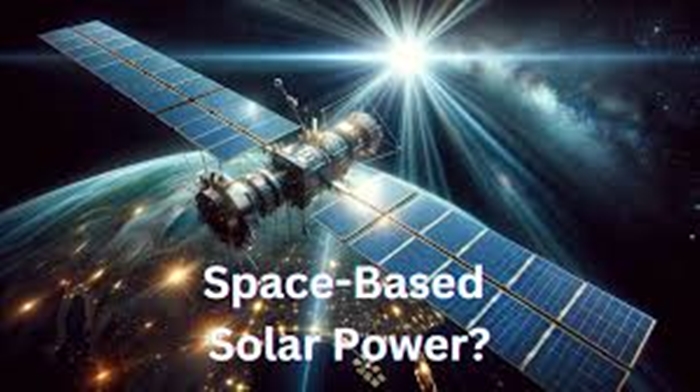In this article, we discussed the meaning of space based solar power, benefits, we also talked about its advantages and disadvantages.
Definition
Space-based solar power (SBSP) is the concept of collecting solar energy in space and sunny it to Earth:
How it works
Solar panels in space collect the sun’s energy, which is then converted into electricity. The electricity is transmitted to Earth as microwaves or a laser stream of light. On Earth, the microwaves are received by a rectenna, which converts them back into electricity and feeds it into the local grid.
Space-based solar power (SBSP or SSP) is the concept of collecting solar power in outer space with solar power satellites (SPS) and distributing it to Earth.
Benefits Space-based solar power
SBSP has several potential benefits, including:
Capturing more energy: Solar panels in space can capture more energy than terrestrial solar panels because there are no clouds, atmosphere, or nighttime in space.
Clean energy: SBSP is a clean energy source with zero carbon emissions.
Low environmental impact: SBSP has a low environmental impact on land use and footprint.
Advantages of Space-Based Solar Power (SBSP)
Global Distribution
SBSP has the advantage that it can deliver power to many markets by simply switching to another base station. This flexibility allows for a responsive distribution of electricity across and between power networks.
Clean and Sustainable
SBSP offers perfectly clean electricity with very little negative environmental impact during operation. It does not discharge conservatory gases, does not require water resources, and avoids the environmental issues associated with withdrawal operations on Earth.
High Energy Production
SBSP systems can potentially yield significantly more power than terrestrial solar power due to the constant and unobstructed exposure to the sun. It is estimated that SBSP could produce energy levels similar to nuclear power plants, offering a renewable alternative to traditional power sources.
Nonstop Energy Supply
One of the primary advantages of SBSP is the ability to provide a steady, continuous transmission of power. Unlike global solar power, SBSP is not subject to the day-night cycle, weather conditions, or seasonal variations, which means it can provide a constant and reliable source of power.
Technological Progress
Technological advances have made the concept of SBSP more feasible. The cost of space launches has reduced, and the performance of photovoltaics has improved, making the construction of SBSP systems more economically viable.
Disadvantages of Space-Based Solar Power
Competition with Global Renewables
SBSP must compete with ground-based renewable energy sources, which are becoming increasingly efficient and cost-effective. Additionally, the need for energy storage solutions on Earth is still a factor that SBSP does not address.
Energy Transmission
Transmitting the collected energy back to Earth presents technical challenges. There is a risk of energy loss during transmission, and the safety of high-intensity wireless power transfer needs to be ensured.
High Initial Budgets
The cost of launching solar panels and other necessary materials into space is still very high. Building large revolving structures and maintaining them is complex and expensive.
Space Environment Challenges
The space environment is hostile, with issues such as space debris, extreme solar radiation, and significant degradation of photovoltaic panels. These factors can posture hazards to the veracity of SBSP systems.
Environmental and Safety Concerns
There are concerns about the environmental impact of launching and deploying satellites, as well as potential risks to human health due to the transmission of energy through microwaves or lasers.
Uses
Solar energy has long been used directly as a source of current energy. Beginning in the 20th century, technological advances have increased the number of uses and applications of the Sun’s current energy and opened the doors for the generation of solar power.
Conclusion: Solar power works by converting energy from the sun into power. There are two forms of energy generated from the sun for our use – electricity and heat. Both are generated through the use of solar panels, which range in size from residential rooftops to ‘solar farms’ stretching over acres of rural land.


